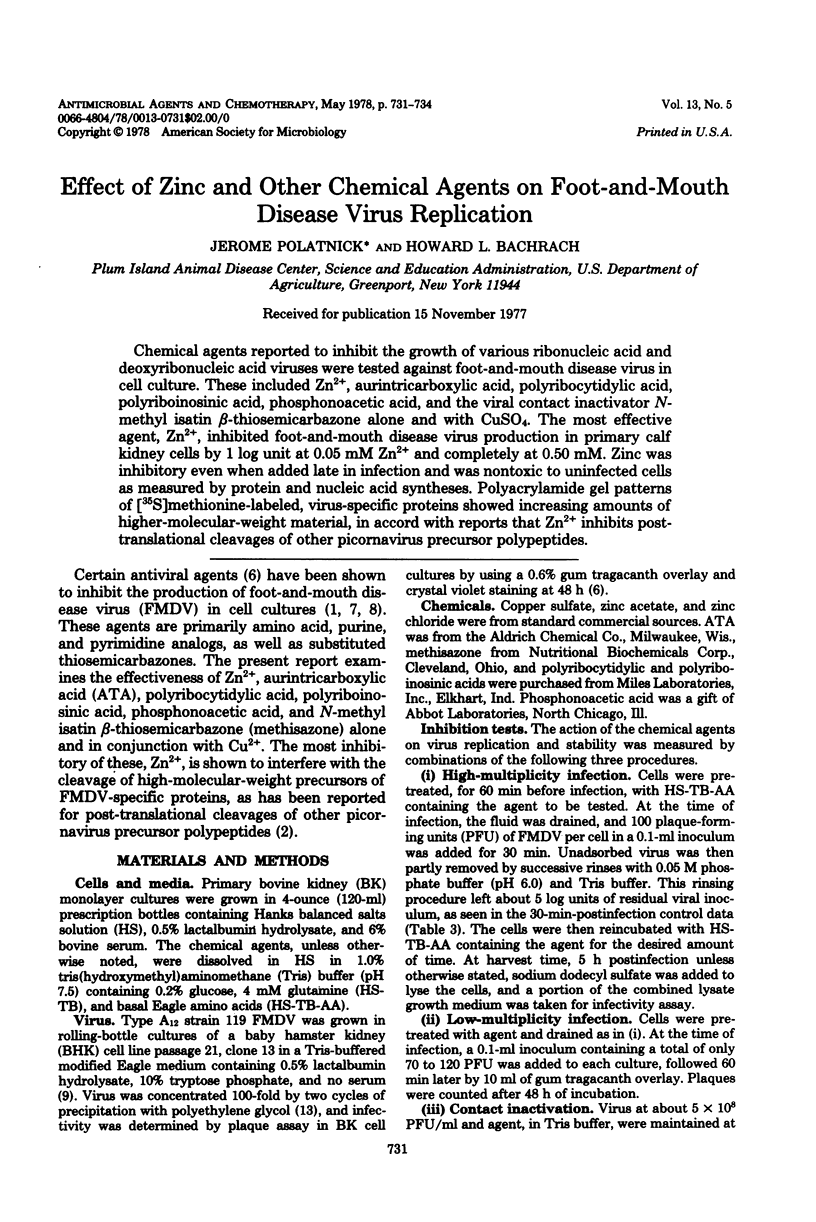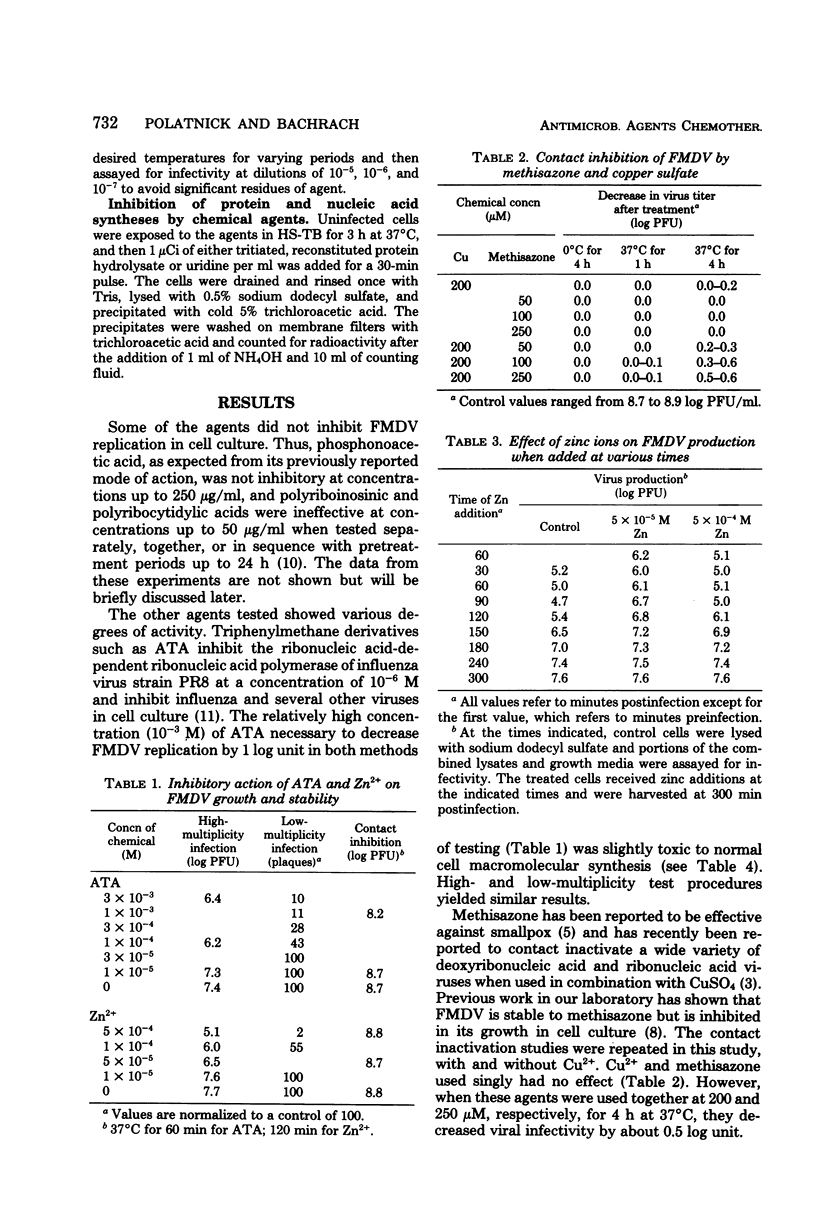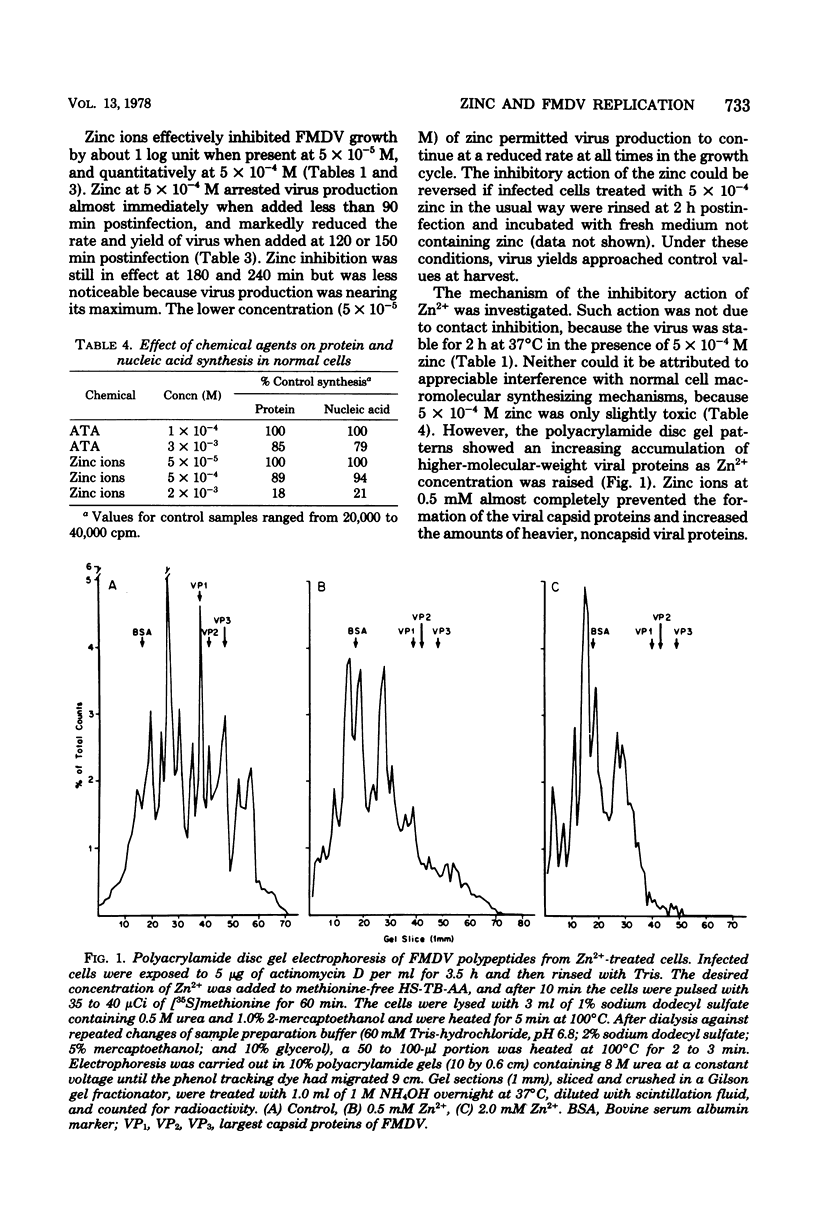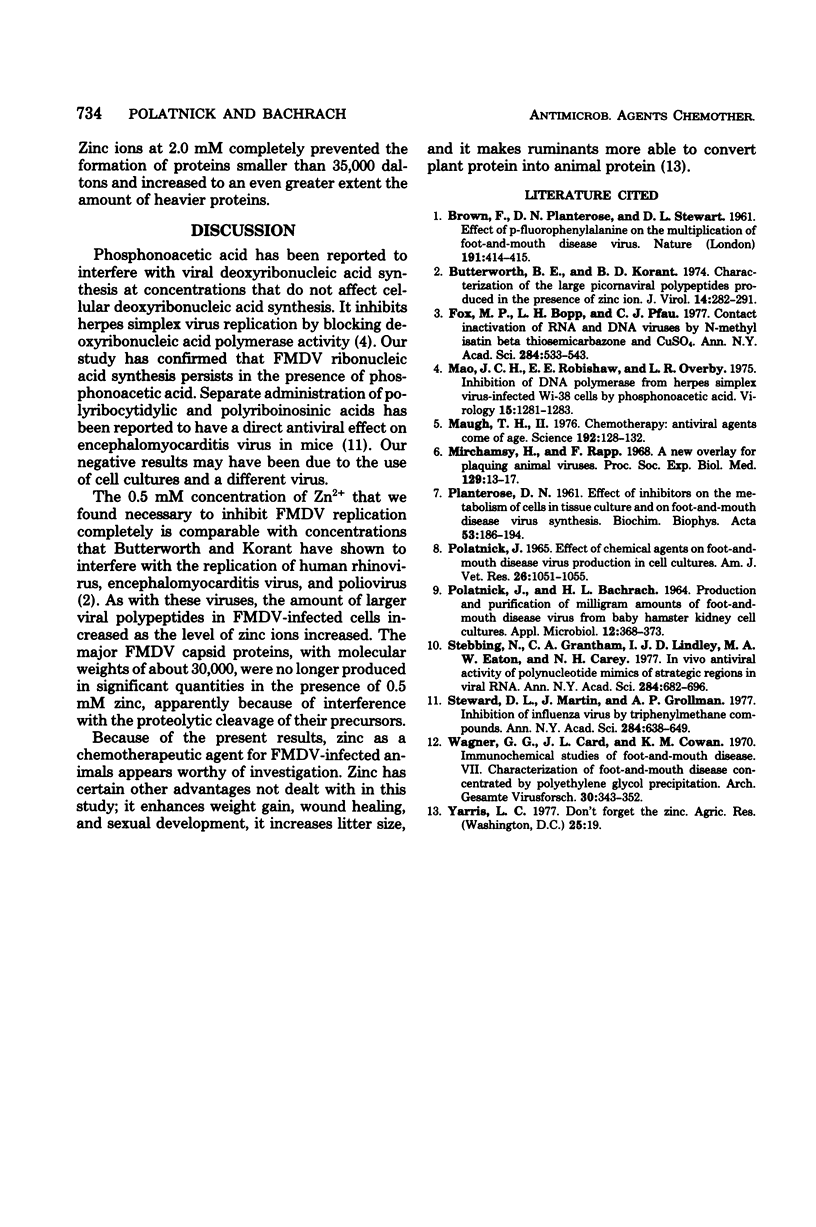Abstract
Chemical agents reported to inhibit the growth of various ribonucleic acid and deoxyribonucleic acid viruses were tested against foot-and-mouth disease virus in cell culture. These included Zn2+, aurintricarboxylic acid, polyribocytidylic acid, polyriboinosinic acid, phosphonoacetic acid, and the viral contact inactivator N-methyl isatin β-thiosemicarbazone alone and with CuSO4. The most effective agent, Zn2+, inhibited foot-and-mouth disease virus production in primary calf kidney cells by 1 log unit at 0.05 mM Zn2+ and completely at 0.50 mM. Zinc was inhibitory even when added late in infection and was nontoxic to uninfected cells as measured by protein and nucleic acid syntheses. Polyacrylamide gel patterns of [35S]methionine-labeled, virus-specific proteins showed increasing amounts of higher-molecular-weight material, in accord with reports that Zn2+ inhibits post-translational cleavages of other picornavirus precursor polypeptides.
Full text
PDF



Selected References
These references are in PubMed. This may not be the complete list of references from this article.
- Butterworth B. E., Korant B. D. Characterization of the large picornaviral polypeptides produced in the presence of zinc ion. J Virol. 1974 Aug;14(2):282–291. doi: 10.1128/jvi.14.2.282-291.1974. [DOI] [PMC free article] [PubMed] [Google Scholar]
- Fox M. P., Bopp L. H., Pfau C. J. Contact inactivation of RNA and DNA viruses by N-methyl isatin beta-thiosemicarbazone and CuSO4. Ann N Y Acad Sci. 1977 Mar 4;284:533–543. doi: 10.1111/j.1749-6632.1977.tb21986.x. [DOI] [PubMed] [Google Scholar]
- Mao J. C., Robishaw E. E., Overby L. R. Inhibition of DNA polymerase from herpes simplex virus-infected wi-38 cells by phosphonoacetic Acid. J Virol. 1975 May;15(5):1281–1283. doi: 10.1128/jvi.15.5.1281-1283.1975. [DOI] [PMC free article] [PubMed] [Google Scholar]
- Maugh T. H., 2nd Chemotherapy: antiviral agents come of age. Science. 1976 Apr 9;192(4235):128–132. doi: 10.1126/science.192.4235.128. [DOI] [PubMed] [Google Scholar]
- Mirchamsy H., Rapp F. A new overlay for plaquing animal viruses. Proc Soc Exp Biol Med. 1968 Oct;129(1):13–17. doi: 10.3181/00379727-129-33237. [DOI] [PubMed] [Google Scholar]
- PLANTEROSE D. N. Effect of inhibitors on the metabolism of cells in tissue culture and on foot-and-mouth disease virus synthesis. Biochim Biophys Acta. 1961 Oct 14;53:186–194. doi: 10.1016/0006-3002(61)90806-x. [DOI] [PubMed] [Google Scholar]
- POLATNICK J., BACHRACH H. L. PRODUCTION AND PURIFICATION OF MILLIGRAM AMOUNTS OF FOOT-AND-MOUTH DISEASE VIRUS FROM BABY HAMSTER KIDNEY CELL CULTURES. Appl Microbiol. 1964 Jul;12:368–373. doi: 10.1128/am.12.4.368-373.1964. [DOI] [PMC free article] [PubMed] [Google Scholar]
- Polatnick J. Effect of chemical agents on foot-and-mouth disease virus production in cell cultures. Am J Vet Res. 1965 Sep;26(114):1051–1055. [PubMed] [Google Scholar]
- Stebbing N., Grantham C. A., Lindley I. J., Eaton M. A., Carey N. H. In vivo antiviral activity of polynucleotide mimics of strategic regions in viral RNA. Ann N Y Acad Sci. 1977 Mar 4;284:682–696. doi: 10.1111/j.1749-6632.1977.tb22004.x. [DOI] [PubMed] [Google Scholar]
- Steward D. L., Martin J., Grollman A. P. Inhibition of influenza virus by triphenylmethane compounds. Ann N Y Acad Sci. 1977 Mar 4;284:638–649. doi: 10.1111/j.1749-6632.1977.tb21998.x. [DOI] [PubMed] [Google Scholar]
- Wagner G. G., Card J. L., Cowan K. M. Immunochemical studies of foot-and-mouth disease. VII. Characterization of foot-and-mouth disease virus concentrated by polyethylene glycol precipitation. Arch Gesamte Virusforsch. 1970;30(4):343–352. doi: 10.1007/BF01258364. [DOI] [PubMed] [Google Scholar]


